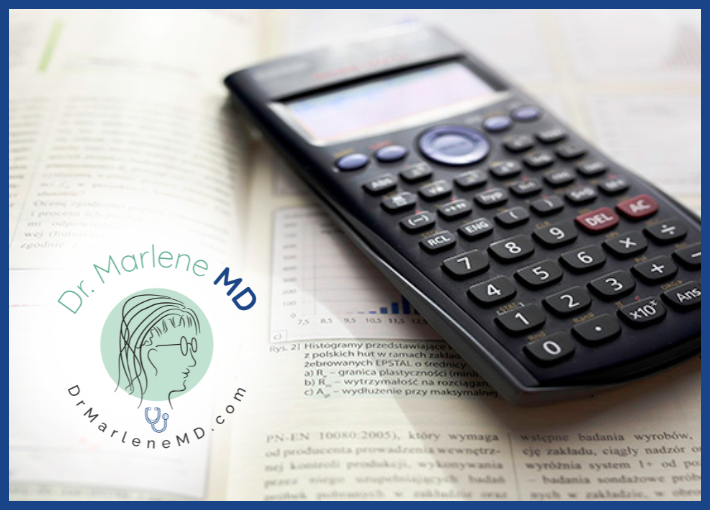April is Mathematics Awareness Month. Math, the language of numbers, abbreviations, and symbols.
I honor Mathematics Awareness Month every day by reading food labels. Using my pocket magnifying glass, I read the fine print on the food packages at the grocery store. I am curious about what I am eating.
I pick up a pancake mix. The front label has the weight in pounds or lbs., ounces or oz, and grams or g. Math. With trepidation, I read the nutrition facts label. Serving size is in big letters. A serving size is the amount a foodie expert says to eat at one seating of this food product. This package of pancake mix says 2 pancakes of unknown size, more math, is a serving. I sometimes eat 3 silver dollar size pancakes, my portion size. Portion, what I eat, versus serving, what I am told to eat.
I read the directions, trying to visualize a cup and teaspoon. Math. I should have brought with me my Good Grips Measuring Cups and Spoons.
I read on. The label has 2 sugar columns, a must read for me. The total sugar line with a line below of added sugars, in grams or g. Total sugars minus the added sugars gives the natural sugar content in the product, the good to eat for the brain sugars. I avoid products with added sugars. I will add my own sweetness, thank you very much.
For a diabetic, the math of food is especially crucial. The sugar content of food and blood sugar are of daily concerns. A diabetic’s goal numbers are set by their healthcare provider. For those diabetics on insulin, I love the Diabetes Workbook Journal written by an insulin-dependent diabetic. It has easy to use logs, with great content, assisting in organizing those numbers.
The sodium or salt line of any serving is another line item of importance. The American Heart Association recommends a maximum of 2300 mg of sodium or salt per day. Salt in our foods elevates a person’s blood pressure.
I love my new blood pressure monitor, iHealth Home Blood Pressure Monitor. It has a color-coded screen in stop light colors to remind me of the blood pressure guidelines. My readings appear on the iHealth (free) app on my phone, dated and timed. “Hey, Doc, look at my phone display of my home blood pressure numbers. Are my blood pressure medications working?”
Thanks, nutrition label, for showing me the amount of sugar and sodium in my food. Math tells me that about 4 grams of this or that equals 1 teaspoon. In other words, ¼ teaspoon is about 1 gram. I love my digital gram measuring spoon, helping me add just the right amount of sweetness or saltiness to my food.
EveryWAY Nutrition honors Mathematics Awareness Month. One food label, one line at a time. Before restricting any food items, check with your health care provider. Share with me a Mathematics Awareness Moment at DrMarleneMD.com and easy newsletter sign-up at drmarlenemd.com/newsletter/
No content in this article and any article on this site, regardless of date, should ever be used as a substitute for direct medical advice from your doctor or healthcare provider.
References:
- American Heart Association, (November 1, 2021), How much sodium should I eat per day?, Healthy Living, https://www.heart.org/en/healthy-living/healthy-eating/eat-smart/sodium/how-much-sodium-should-i-eat-per-day
- The New Nutrition Facts Label, (March 11, 2020), What’s New with the Nutrition Facts Label, S. Food and Drug Administration (FDA), https://www.fda.gov/food/new-nutrition-facts-label/whats-new-nutrition-facts-label

